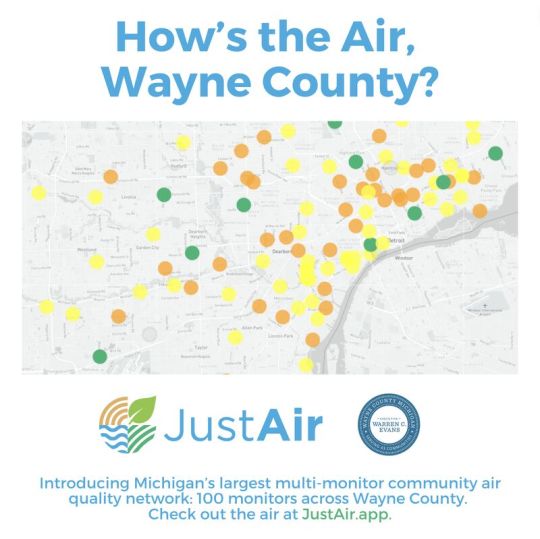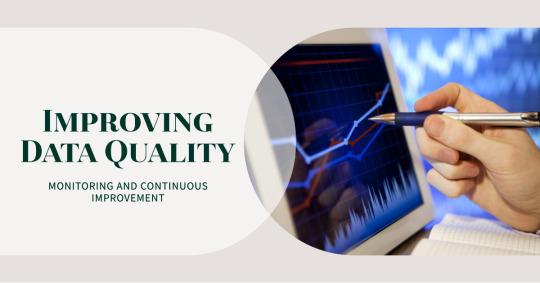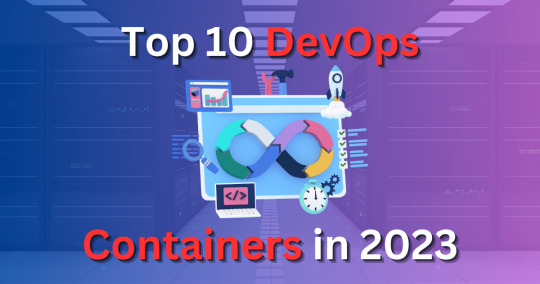#data quality monitoring
Explore tagged Tumblr posts
Text
Data Quality Management: It's About Prevention
Dirty data can lead to costly mistakes, missed opportunities, and frustrated users. That’s where Data Quality Management (DQM) steps in. But here’s the shocker: many DQM efforts fall short of their core objective – preventing data quality issues from happening again. The 1:10:100 Rule: The Manual MazeMonitoring Without Action is MeaninglessShifting the Focus to PreventionConclusion Imagine…

View On WordPress
0 notes
Text
Automate, Optimize, and Succeed AI in Call Centers

Introduction
The call center industry has undergone a significant transformation with the integration of artificial intelligence (AI). Businesses worldwide are adopting AI-powered call center solutions to enhance customer service, improve efficiency, and reduce operational costs. AI-driven automation helps optimize workflows and ensures superior customer experiences. This article explores how AI is revolutionizing call centers, focusing on automation, optimization, and overall business success.
The Rise of AI in Call Centers
AI technology is reshaping the traditional call center model by enabling automated customer interactions, predictive analytics, and enhanced customer service strategies. Key advancements such as Natural Language Processing (NLP), machine learning, and sentiment analysis have led to the creation of intelligent virtual assistants and chatbots that streamline communication between businesses and customers.
Key Benefits of AI in Call Centers
Automation of Repetitive Tasks
AI-driven chatbots and virtual assistants handle routine customer inquiries, freeing up human agents to focus on more complex issues.
AI automates call routing, ensuring customers reach the right agent or department quickly.
Improved Customer Experience
AI-powered systems provide personalized responses based on customer history and preferences.
AI reduces wait times and improves first-call resolution rates, leading to higher customer satisfaction.
Optimized Workforce Management
AI-based analytics predict call volumes and optimize staffing schedules to prevent overstaffing or understaffing.
AI assists in real-time monitoring and coaching of agents, improving overall productivity.
Enhanced Data Analysis and Insights
AI tools analyze customer interactions to identify trends, allowing businesses to improve services and make data-driven decisions.
Sentiment analysis helps understand customer emotions and tailor responses accordingly.
Cost Efficiency and Scalability
AI reduces the need for large call center teams, cutting operational costs.
Businesses can scale AI-powered solutions effortlessly without hiring additional staff.
AI-Powered Call Center Technologies
Chatbots and Virtual Assistants
These AI-driven tools handle basic inquiries, appointment scheduling, FAQs, and troubleshooting.
They operate 24/7, ensuring customers receive support even outside business hours.
Speech Recognition and NLP
NLP enables AI to understand and respond to human language naturally.
Speech recognition tools convert spoken words into text, enhancing agent productivity and improving accessibility.
Sentiment Analysis
AI detects customer emotions in real time, helping agents adjust their approach accordingly.
Businesses can use sentiment analysis to track customer satisfaction and identify areas for improvement.
Predictive Analytics and Call Routing
AI anticipates customer needs based on past interactions, directing them to the most suitable agent.
Predictive analytics help businesses forecast trends and plan proactive customer engagement strategies.
AI-Powered Quality Monitoring
AI analyzes call recordings and agent interactions to assess performance and compliance.
Businesses can provide data-driven training to improve agent efficiency and customer service.
Challenges and Considerations in AI Implementation
While AI offers numerous benefits, businesses must address several challenges to ensure successful implementation:
Data Privacy and Security
AI systems process vast amounts of customer data, making security a top priority.
Businesses must comply with regulations such as GDPR and CCPA to protect customer information.
Human Touch vs. Automation
Over-reliance on AI can make interactions feel impersonal.
A hybrid approach, where AI supports human agents rather than replacing them, ensures a balance between efficiency and empathy.
Implementation Costs
AI integration requires an initial investment in technology and training.
However, long-term benefits such as cost savings and increased productivity outweigh the initial expenses.
Continuous Learning and Improvement
AI models require regular updates and training to adapt to changing customer needs and market trends.
Businesses must monitor AI performance and refine algorithms to maintain efficiency.
Future of AI in Call Centers
The future of AI in call centers is promising, with continued advancements in automation and machine learning. Here are some trends to watch for:
AI-Driven Omnichannel Support
AI will integrate seamlessly across multiple communication channels, including voice, chat, email, and social media.
Hyper-Personalization
AI will use real-time data to deliver highly personalized customer interactions, improving engagement and satisfaction.
Autonomous Call Centers
AI-powered solutions may lead to fully automated call centers with minimal human intervention.
Enhanced AI and Human Collaboration
AI will complement human agents by providing real-time insights and recommendations, improving decision-making and service quality.
Conclusion
AI is transforming call centers by automating processes, optimizing operations, and driving business success. Companies that embrace AI-powered solutions can enhance customer service, increase efficiency, and gain a competitive edge in the market. However, successful implementation requires balancing automation with the human touch to maintain meaningful customer relationships. By continuously refining AI strategies, businesses can unlock new opportunities for growth and innovation in the call center industry.
#AI in call centers#Call center automation#AI-powered customer service#Virtual assistants in call centers#Chatbots for customer support#Natural Language Processing (NLP)#Sentiment analysis in call centers#Predictive analytics in customer service#AI-driven workforce optimization#Speech recognition in call centers#AI-powered quality monitoring#Customer experience optimization#Data analysis in call centers#Call center efficiency#AI and human collaboration#Future of AI in call centers#AI-driven omnichannel support#Hyper-personalization in customer service#Autonomous call centers#AI security and compliance
0 notes
Text
Tornado Quest Top Science Links For February 8 - 15, 2025 #science #weather #climate #climatechange #winter
Greetings to all and thanks for stopping by. Tornado Quest is now on Telegram. Scan the QR code above or check out the link below and follow along with some personal perspectives and the occasional thought provoking meme on a channel that will be selfie and food free. As for this week in science, it’s been another interesting and challenging week of many topics. Winter weather safety information…

View On WordPress
#1.5C#air pollution#air quality#astronomy#bluesky#climate#climate change#climate crisis#climate emergency#climate record#climatology#doge#drought#drought monitor#earth#earth core#environment#global temperatures#global warming#greenland#health#heat and health#ice#ice sheet#january 2025#meteorology#national snow and ice data center#national weather service#nhc#NOAA
0 notes
Text
Benefits of Implementing ERP Software for Engineering Firms

The engineering industry is one of the biggest industries in the world, and it plays an important role in growing the economy as well. The engineering sector is growing day by day and is highly competitive. Hence, efficiency, accuracy, and streamlined operations are crucial for success in this sector. Businesses face several challenges in this sector, like the complexities of a project, resource management, and deadline restrictions. ERP software for engineering firms is the best way to overcome all of these challenges as it integrates and automates business processes.
Here is the list of top benefits of utilizing ERP systems for the engineering industry:
1. Project Management:
The projects in engineering sectors have a detailed documentation process, different teams, and complicated workflows. ERP system for engineering firms help in various ways, like centralizing project data, enabling limitless collaboration, and getting real-time updates. Because of this software, every team member has all the updates, which in turn reduces miscommunication and delays in the project.
2. Resource Management:
For all engineering projects, it is essential to allocate all resources carefully, like equipment, materials, and labor. With the utilization of ERP software, the monitoring of resources can be performed easily. It helps in checking resource availability, optimizing usage, and forecasting requirements. This ultimately results in improving cost efficiency.
3. Quality Management:
Ensures engineering projects meet industry standards and regulations.
Quality Control: Offers tools for monitoring and managing the quality of materials, processes, and completed projects.
4. Data Management:
Using ERP software, engineering firms can make sure that they can get a unified database to eliminate data silos and ensure consistency through all departments. A centralized data management system is beneficial for decision-making as well it provides critical information when required.
5. Time and Budget Management:
When the whole system gets automated with ERP software, it reduces time and cost on repetitive tasks like data entry, procurement, and inventory management. The utilization of ERP systems in engineering firms helps in reducing manual errors and improving productivity. Hence, the firms can focus on other important things like innovation and project execution.
6. Client Relationship Management:
Most ERP systems include customer relationship management tools that are very helpful in managing client interactions. This tool allows the firm to track communication history, project milestones, and client preferences. Because of this feature, firms can improve customer satisfaction and build long-term relationships.
7. Scalability and Flexibility
ERP solutions may scale with the company as it grows, allowing for more projects, clients, and resources. Customization: ERP solutions can typically be tailored to an engineering firm’s specific demands and operations.
8. Financial Management
Accounting combines financial accounting with project management to provide a complete picture of the company’s financial health. Reporting: Creates detailed financial reports, such as profit and loss statements, balance sheets, and cash flow statements.
How PMTRACK ERP Helps:
Managing development processes, monitoring complex projects, and ensuring seamless collaboration across divisions are becoming increasingly important for company success. Engineering organizations in Pune, India, and around the world have distinct issues in successfully managing their operations.
Implementing a bespoke Enterprise Resource Planning (ERP) solution provides transformative benefits by streamlining processes, improving project management, and ultimately generating profitability.
For businesses considering ERP adoption, selecting the correct ERP software vendor is critical. PMTRACK ERP, a reputable ERP solution provider in Pune, India, specializes in engineering ERP systems tailored to the demands of engineering and manufacturing companies.
ERP software is used to connect project management with financial accounting, inventory control, and procurement procedures. This integration gives project managers real-time information about project costs, resource availability, and schedules, resulting in better-informed decisions and more effective project execution.
Engineering firms that use an ERP system can improve operational efficiency, reduce costs, improve project delivery, and ultimately boost client satisfaction and profitability.
Summary:
ERP software provides several advantages to engineering firms in Pune, India, ranging from better project management and financial control to higher client satisfaction and scalability. Engineering organizations can employ a comprehensive ERP solution to improve operations, decrease inefficiencies, and drive long-term growth.
PMTRACK ERP, one of the leading ERP solution providers in Pune, India, provides comprehensive, industry-specific ERP solutions that are suitable for engineering organizations’ unique requirements. Firms that collaborate with an experienced engineering ERP software company in India receive a trusted partner in negotiating the complexity of their business, setting them up for success in an increasingly competitive landscape.
#efficiency#accuracy#and streamlined operations are crucial for success in this sector. Businesses face several challenges in this sector#like the complexities of a project#resource management#Here is the list of top benefits of utilizing ERP systems for the engineering industry:#1. Project Management:#The projects in engineering sectors have a detailed documentation process#different teams#and complicated workflows. ERP system for engineering firms help in various ways#like centralizing project data#enabling limitless collaboration#and getting real-time updates. Because of this software#every team member has all the updates#which in turn reduces miscommunication and delays in the project.#2. Resource Management:#For all engineering projects#it is essential to allocate all resources carefully#like equipment#materials#and labor. With the utilization of ERP software#the monitoring of resources can be performed easily. It helps in checking resource availability#optimizing usage#and forecasting requirements. This ultimately results in improving cost efficiency.#3. Quality Management:#Ensures engineering projects meet industry standards and regulations.#processes#and completed projects.#4. Data Management:#Using ERP software
0 notes
Text
How Quantzig's Data Quality Improvement Solutions Boost Business Intelligence
Business intelligence (BI) is essential for staying competitive in today's rapidly changing market. Quantzig’s data quality improvement solutions lay the foundation for BI, ensuring insights are based on reliable, clean data. Here’s how our solutions empower businesses to elevate their intelligence processes and make more strategic choices.
Why Data Quality is the Backbone of Business Intelligence
Effective BI relies on data that is accurate, complete, and current. Poor data quality can compromise the integrity of BI insights, leading to misguided decisions and potentially costly errors. Companies looking to harness the power of BI for customer retention, trend analysis, or competitor benchmarking need a data quality improvement strategy to ensure trustworthy outputs.
Catch our new webinar
Quantzig’s Approach to Data Quality in BI
Quantzig offers a tailored approach that adapts to the unique BI needs of each organization. Our process includes:
Data Profiling and Auditing: We assess the state of the data before BI systems ingest it, identifying and resolving any issues with completeness or accuracy.
Data Enrichment and Integration: By adding context from third-party data, our enrichment process enhances the scope of BI analytics, especially for identifying emerging trends in the US market.
Real-Time Data Monitoring: Through automation and machine learning, we ensure that data remains accurate and relevant, even as new information enters the system.
Realized Benefits of Quantzig’s Data Quality Improvement in BI
Our clients report improved decision-making speed and accuracy, thanks to our data quality measures. In an increasingly competitive landscape, the advantage of reliable BI insights cannot be overstated, and Quantzig is committed to empowering organizations with the quality data they need.
For more information please contact
0 notes
Text
Medical care demands a safe, clean environment. With the rise of COVID-19 and antibiotic-resistant diseases, now more than ever, cleaning must go beyond appearances as a matter of community health.
So, how can you ensure that your ER, recovery rooms, hallways, kitchen, washroom areas, elevators—every floor in the hospital—are clean enough to conform to the standards of high-quality healthcare? With our commecial healthcare cleaning tools combined with the i-know kit, you can monitor the cleanliness of all touchpoint areas. See the best cleaning tools for hospitals, including our i-know test kit to determine if surfaces have been adequately cleaned.
With i-know, it only takes around 60 seconds to measure dirt levels on a surface. That speed and accuracy empowers cleaning teams with useful data to get objective feedback on the quality of their commercial cleaning practises.
#clean environment. With the rise of COVID-19 and antibiotic-resistant diseases#cleaning must go beyond appearances as a matter of community health.#recovery rooms#hallways#kitchen#elevators—every floor in the hospital—are clean enough to conform to the standards of high-quality healthcare? With our commecial healthcar#you can monitor the cleanliness of all touchpoint areas. See the best cleaning tools for hospitals#it only takes around 60 seconds to measure dirt levels on a surface. That speed and accuracy empowers cleaning teams with useful data to ge#Cordless vacuums#Disinfectant sprayers#Air purifiers for offices#Cleaning equipment for healthcare#Floor scrubber machines#Cordless vacuum cleaners for business#Disinfection systems for hospitals#Healthcare cleaning solutions#Educational facility cleaning tools#Hospitality cleaning equipment#Industrial floor cleaning machines#Retail cleaning systems#Best floor scrubbers for commercial use
0 notes
Text
AI Consulting Business in Construction: Transforming the Industry
The construction industry is experiencing a profound transformation due to the integration of artificial intelligence (AI). The AI consulting business is at the forefront of this change, guiding construction firms in optimizing operations, enhancing safety, and improving project outcomes. This article explores various applications of AI in construction, supported by examples and statistics that…
#AI Consulting Business#AI in Construction#AI Technologies#artificial intelligence#Big Data Analytics#Construction Automation#construction efficiency#construction industry#Construction Safety#construction sustainability#Data Science#Generative Design#IoT Technologies#Labor Optimization#Machine Learning#Predictive Analytics#project management#quality control#Robotics#Safety Monitoring
0 notes
Text
Map: JustAir Air Quality Monitor Network in Detroit
A project idea that has been in the works for just shy of a decade was finally made real by the team at JustAir and the Wayne County government. While I worked at the Detroit Health Department I worked on conceptualizing and then managing an effort to create an air quality sensor network that could provide neighborhood-level updates on air quality. The issue was that EPA and EGLE monitors were…

View On WordPress
#2024#air#air quality#asthma#data#Detroit#DREACT#EPA#geography#map#monitor#network#sensor#urban planning#Wayne County#wildfire
0 notes
Text
SnowDQ – Unveiling the Data Quality Tool for High Quality and Accurate Data
The infographic offers a glimpse into the importance of data quality, exploring how it shapes the destiny of businesses by enabling precise decision-making and fostering a culture of innovation.
Read more: Data Quality Tool for High-Quality Data
0 notes
Text
Data Quality Monitoring and Continuous Improvement
Introduction In today’s data-driven business landscape, the importance of data quality cannot be overstated. Reliable and accurate data forms the bedrock of informed decision-making, strategic planning, and effective customer engagement. As organizations continue to gather vast volumes of data, the need for robust data quality monitoring becomes paramount. In this article, we will delve into the…

View On WordPress
0 notes
Text
Flowchart Symbols and Tools
Flowchart Symbols and Tools Flowchart is the sixth tool of the seven basic quality control tools. A flowchart is a diagram that uses graphic symbols to depict the nature and flow of steps in a process. A flowchart is also known as a flow diagram, process map, or relationship map. This article describes, in brief, what is a flowchart, the uses of process map, and the tools and techniques to…

View On WordPress
0 notes
Text
Top 10 DevOps Containers in 2023
Top 10 DevOps Containers in your Stack #homelab #selfhosted #DevOpsContainerTools #JenkinsContinuousIntegration #GitLabCodeRepository #SecureHarborContainerRegistry #HashicorpVaultSecretsManagement #ArgoCD #SonarQubeCodeQuality #Prometheus #nginxproxy
If you want to learn more about DevOps and building an effective DevOps stack, several containerized solutions are commonly found in production DevOps stacks. I have been working on a deployment in my home lab of DevOps containers that allows me to use infrastructure as code for really cool projects. Let’s consider the top 10 DevOps containers that serve as individual container building blocks…

View On WordPress
#ArgoCD Kubernetes deployment#DevOps container tools#GitLab code repository#Grafana data visualization#Hashicorp Vault secrets management#Jenkins for continuous integration#Prometheus container monitoring#Secure Harbor container registry#SonarQube code quality#Traefik load balancing
0 notes
Text
How does one track and monitor vaccine coverage in a population?
Tracking and monitoring vaccine coverage in a population is essential for evaluating the success of immunization programs and identifying areas that require improvement. It allows public health authorities to assess the reach and impact of vaccination efforts, identify gaps in coverage, and make informed decisions to enhance immunization rates. This article explores the methods and considerations…

View On WordPress
#collaboration and partnerships#continuous quality improvement#data integration and analysis#immunization information systems#immunization rates#monitoring immunization rates#routine immunization surveys#sentinel surveillance#Tracking vaccine coverage#vaccination data#vaccination registries#vaccine preventable diseases surveillance
0 notes
Text
Strategic Insights into the Clinical Trial Investigative Site Network Market
The global clinical trial investigative site network market size is expected to reach USD 12.5 billion by 2030. Growing investments in pharmaceutical R&D, increasing demand for new therapies and complications associated with site management of clinical trials are some of the major factors driving the growth of the industry. There has been a consistent rise the clinical trials in the last 5 years. For instance, according to ClinicalTrials.gov, over 262,298 trials were registered in 2018, whereas as of September 2022, over 399,518 trials were registered. The clinical trials are expected to grow even further as the funding for research improves.

Gain deeper insights on the market and receive your free copy with TOC now @: Clinical Trial Investigative Site Network Market Report
This is expected to propel the growth of the industry post-pandemic. There is a growing focus on reducing the cost associated with clinical research. Hiring a clinical trial investigative site network supports the regulatory function, improves the enrollment of participants, assists in data management, and quality assurance. It increases process compliance, reduces process issues with each trial, and helps with faster trial initiations, and shorter trial timelines. These factors are supporting the demand for clinical investigative site networks. The governments are actively trying to improve R&D by providing tax deductions. For instance, in January 2022, the Indian government stated that it is providing a weighted average tax deduction of up to 200% in R&D.
Such initiatives are expected to improve the R&D activities on drugs and thus support industry growth. According to the IQVIA, report on oncology trends, clinical trials for cancer have been increasing for the last 10 years. For instance, in 2011, 1,242 trials were registered for cancer, and as of 2021, 2,335 trials were registered for cancer. The number of clinical trials for cancer is expected to rise even further owing to the growing prevalence of the disease. This is expected to improve the demand for clinical investigative site networks for cancer clinical trials post-pandemic.
#Clinical Trials#Investigative Sites#Clinical Research#Clinical Trial Network#Medical Research#Clinical Site Management#Trial Coordination#Research Networks#Patient Recruitment#Healthcare Innovation#Data Integrity#Patient Centricity#Trial Management#Research Collaboration#Protocol Compliance#Site Monitoring#Clinical Operations#Healthcare Quality#Patient Engagement#Clinical Data Management
0 notes
Text
Why Does Air Quality Matter for Real Estate?
Introduction
Air quality is an important factor that can influence the value and desirability of a property. In today's world, air quality data has become increasingly important in the real estate market. With the growing awareness of air pollution and its effects on human health, it is important for potential buyers and sellers to understand how air quality can affect the value of their property. In this blog, we will discuss why air quality matters for real estate and explore how air quality data can be used to inform real estate decisions.
Why Does Air Quality Matter For Real Estate?
Air pollution is a growing problem in many parts of the world, and it is no exception in the real estate market. Poor air quality can have a significant impact on a property's value and desirability. Poor air quality can lead to health problems for those living in the property and can also reduce the appeal of the area, making it less desirable for potential buyers. Additionally, air pollution can reduce the value of a property due to reduced visibility and decreased property values.
The effects of air pollution on real estate value can be seen in many parts of the world. In cities with high levels of air pollution, properties are often worth less than those in cleaner areas. Poor air quality can also lead to higher mortgage rates, as lenders recognize the increased risks associated with investing in polluted areas.
Air quality is an important factor to consider when buying or selling real estate, as it can affect the health and well-being of those who live in the house or building. Poor air quality can cause respiratory illnesses and other health issues, including asthma and allergies. It can also create a negative impact on the value of a property, as buyers may be less willing to purchase a home or building with poor air quality. Additionally, poor air quality can lead to increased energy costs, as air conditioners and other heating and cooling systems must work harder to keep the home or building comfortable. Finally, poor air quality can cause damage to furniture, carpets, and other materials in the home or building, leading to costly repairs.
Air Quality Data
In order to understand the effects of air pollution on a property, it is important to have access to accurate air quality data. Air quality data can be obtained from various sources, including government agencies and private companies. This data can provide valuable insight into the air quality in a particular area and can be used to inform real estate decisions.
Air quality data can be used to assess the potential health risks associated with living in a particular area. The data can also be used to identify areas with high levels of air pollution, which can be avoided when purchasing a property. Additionally, air quality data can be used to compare the air quality of different locations, which can be useful for evaluating the potential of a property.
Ambee's Air Quality Data is a revolutionary system that provides users with real-time air quality data from across India. This system provides access to information on 10 key pollutants including PM 2.5, PM 10, CO, SO2, NO2, O3, temperature, humidity, wind speed and wind direction. With Ambee's Air Quality Data, users can easily monitor air quality in their city, allowing them to take steps to protect their health and that of their family. The data is constantly updated and provides users with the most up-to-date information on air quality. By using this system, users can be assured that they are aware of the current air quality in their area and can make informed decisions about the outdoor activities they choose.
Conclusion
Air quality is an important factor that can influence the value and desirability of a property. Poor air quality can have a significant impact on a property's value and desirability, making it important for potential buyers and sellers to understand how air quality can affect the value of their property. Air quality data can help inform real estate decisions, allowing buyers and sellers to make informed decisions about the properties they are interested in.
0 notes